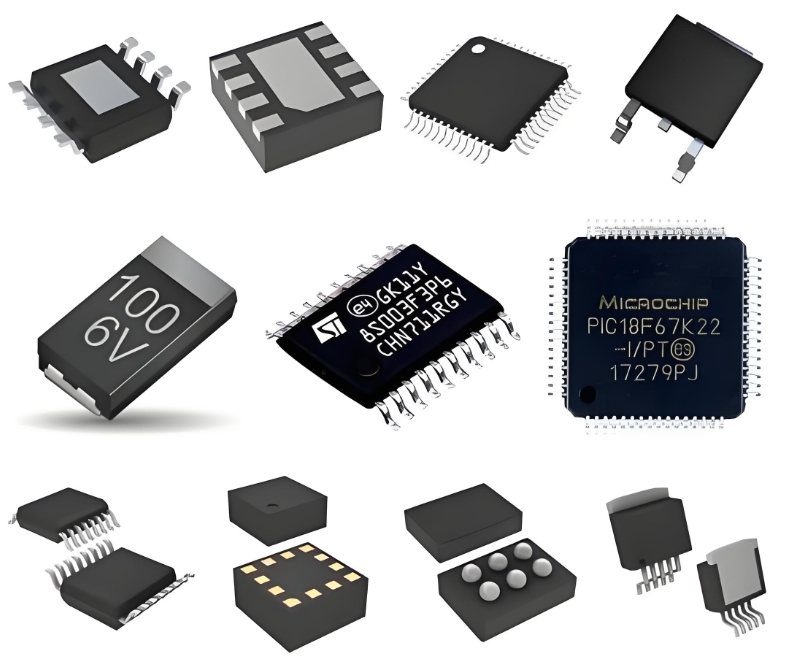**AD5627RBCPZ-REEL7: A Comprehensive Guide to the 12-Bit nanoDAC+ Converter**
In the realm of precision electronics, the conversion of digital signals into precise analog voltages is a fundamental requirement. The **AD5627RBCPZ-REEL7** from Analog Devices stands out as a premier solution, **integrating two 12-bit digital-to-analog converters (DACs)** into an ultra-compact package. This device is a key member of the **nanoDAC+ family**, renowned for its combination of miniaturization, high performance, and ease of use, making it an ideal choice for a vast array of applications from portable instrumentation to industrial control systems.
**Unpacking the nanoDAC+ Technology**
The "nano" prefix signifies more than just the small physical size of the converter; it represents a holistic approach to minimizing the solution footprint. The AD5627RBCPZ-REEL7 is offered in a **tiny 16-lead LFCSP (Lead Frame Chip Scale Package)** with a footprint of only 3mm x 3mm. This incredible space efficiency is achieved without sacrificing functionality. The "+" in nanoDAC+ denotes the inclusion of critical internal features that are often external components in other DACs. Most notably, it incorporates a **internal 2.5V, 5 ppm/°C reference**, which is essential for generating a stable and accurate output voltage. This integration drastically reduces the number of external components required, simplifying board design, saving space, and lowering the overall bill of materials cost.
**Key Features and Specifications**
The AD5627RBCPZ-REEL7 is engineered for performance and flexibility. Its core specifications define its capability:
* **Resolution:** 12 Bits, providing 4096 possible output levels.
* **Channels:** Two fully independent DAC channels.
* **Interface:** A simple and ubiquitous **3-wire serial SPI-compatible interface**, which operates at clock rates up to 50 MHz, facilitating easy communication with modern microcontrollers and processors.
* **Output Type:** Voltage output, with each channel buffered by an amplifier.
* **Power Supply:** Operates from a single **2.7V to 5.5V supply**, making it perfectly suited for both 3V and 5V systems.

* **Low Power Operation:** Consumes a mere **0.9 mW at 5V**, a critical advantage for battery-powered and power-sensitive applications.
* **Output Range:** The full-scale output range is set by the internal reference, providing a **0V to VREF output swing**.
**Application Spaces**
The combination of a small form factor, integrated reference, and dual channels opens doors to numerous applications:
* **Portable and Battery-Powered Equipment:** Medical inhalers, handheld test gear, and remote sensors benefit from its low power consumption and tiny size.
* **Industrial Process Control:** Used for setting voltage thresholds, controlling actuators, and providing programmable voltage offsets.
* **Digital Gain and Offset Adjustment:** Replaces mechanical potentiometers for stable, software-controlled calibration in audio equipment and sensor signal conditioning.
* **Optical Module Control:** Provides the precise bias currents and voltages needed to control lasers and amplifiers in communication systems.
**Design and Implementation Considerations**
Implementing the AD5627 is straightforward. The primary design task involves connecting the power supply and decoupling capacitors (a 0.1µF capacitor placed close to the device is highly recommended). The serial interface lines (SDIN, SCLK, SYNC) must be connected to the host controller. Thanks to the integrated reference, no external reference circuit is needed unless a different voltage is required. For applications demanding the highest DC precision, attention should be paid to PCB layout and grounding schemes to minimize noise.
**ICGOOODFIND:** The AD5627RBCPZ-REEL7 is a highly integrated, space-efficient, and performance-optimized solution for analog output generation. It **eliminates the traditional system-level design trade-off between size, complexity, and accuracy**. By incorporating a precision reference and dual DACs into a minuscule package, it empowers designers to add precision analog functionality to the most space-constrained and power-sensitive designs with minimal effort.
**Keywords:** 12-Bit DAC, nanoDAC+, Integrated Reference, SPI Interface, Low Power Consumption.
